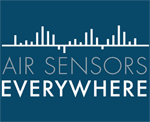Cheap and easy-to-configure air pollution sensors can be purchased by anyone, built in your kitchen, and deployed in your community for just a few dollars (or euros or cedi or whatever currency you prefer). This promises to vastly expand the usefulness of these technologies because it enables more measurements in more locations across the planet. However, the data from these do-it-yourself approaches is, at best, quite uncertain.
Robust research grade instruments provide unassailable and robust data. But this comes at great cost and effort, as these instruments are expensive to procure, time consuming to maintain, and come with extensive infrastructure requirements. In much of the developing world, where air pollution is often the worst,
This project seeks to bring in a diverse and interdisciplinary group of partners to discuss the limitations, and opportunities, of these technologies. Starting with online webinars, we will discuss the ‘ins and outs’ of low-cost sensor techniques. Some of the initial questions for discussion:
- What are the technical limitations of these sensors?
- What are the strengths?
- How does one provide quality-assured data?
- When is marginal data from these sensors okay? When is it not?
- How can we effectively embrace citizen science and community-based participatory research?
- How do we manage the data?
- What is needed for the future?
We will test out some of these questions with a small pilot study around Accra, Ghana in the fall of 2016. Coincidental to this, we are planning an Air Sensors Everywhere Small Sensor Symposium (ASESSS) in October 2016. Location to be determined, but likely held in the United Kingdom.
All of this is a collaborative project among a group of 7 primary investigators, but engaging all of the public – both academic and lay person – in the use of these technologies. If we are to empower the developing world with low-cost sensing techniques, what are we missing?
